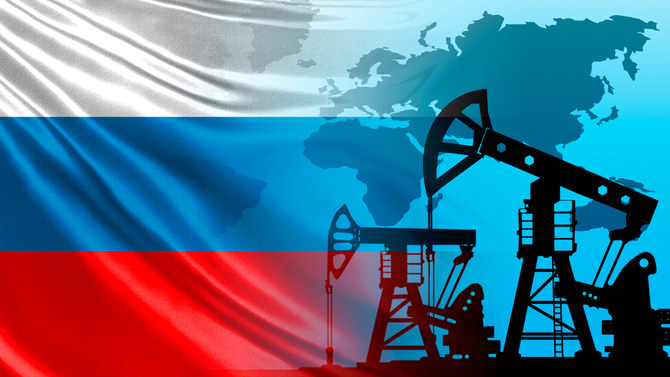India’s Increasing Reliance on Russian Oil Faces Equally Tough Challenges
India has witnessed a significant surge in its oil imports from Russia, with Moscow accounting for 46% of India's oil imports in recent months. This shift in trade patterns has been driven by geopolitical dynamics and India's aim to secure cheaper fuel options. However, as financial pressure on the Kremlin grows and discounts narrow for India, the sustainability of this purchasing spree is being called into question.

India’s growing reliance on Russian oil has been remarkable, with imports skyrocketing from less than 2% before the Ukraine invasion to 46% last month. Although China has also increased its Russian crude imports, it is India’s strategic partnership with Russia that has played a key role in supporting the Russian economy.
The surge in Russian oil imports is evident from the giant tankers unloading their cargoes at refineries on Mumbai’s southeastern coast. Traditionally, these tankers would have transported oil from suppliers in the Middle East, the US, or West Africa. However, the shift to Russian oil has reshaped the market landscape.

Russian Oil Reliance, A Growing Question For India
While the shift has benefited both Russia and India in the short term, there are concerns about its sustainability. The narrowing discounts for India and the increasing financial pressure on the Kremlin create challenges. Russia requires funds urgently to address domestic threats to President Vladimir Putin’s rule, which might impact its ability to maintain attractive pricing for India.
According to analytics firm Kpler, Russia accounted for a staggering 46% of India’s oil imports last month, a significant leap from less than 2% before the Ukraine invasion. This surge in Russian crude imports has been driven by India’s strategic partnership with Russia and its desire to secure cheaper fuel options. It is worth noting that China has also witnessed a substantial increase in Russian crude imports, with import volumes reaching record highs.
The average cost of Russian crude delivered to Indian shores in April was $68.21 per barrel, significantly lower than the price of Saudi oil at $86.96. Indian refiners have taken advantage of these lower prices, helping to keep inflation in check. However, as discounts for India narrow and financial pressure on the Kremlin intensifies, the sustainability of this purchasing spree comes into question.
Indian refiners took the far, far high end and beyond of what we thought would be possible,” said Jamal Qureshi, Managing Director for Strategy and Analysis at Petro-Logistics. “They quickly replaced Urals lookalike grades, which we expected, but they’ve also backed out other grades beyond that.”
Infrastructure Concerns
Infrastructure limitations pose a challenge to further increasing Russian oil imports in India. Refineries in Mumbai, for example, were not originally designed to process Russian barrels, and modifying or expanding these facilities would require significant capital investments and several years of work. Refinery configurations and concerns over over-dependence on a supply source that could face sanctions-induced interruptions further constrain the potential for a substantial increase in Russian crude imports.
“Refiners at this stage are not seeking any changes in configuration,” said Rajiv Agarwal, Technical Director at Engineers India Ltd., a state-owned company that advises on such projects.
Other Challenges
India also faces challenges in terms of blending different oil types. Compared to countries like China, India has fewer commercial tanks for blending, limiting its ability to optimize Russian crude supplies. However, blending different oil types in storage tanks could help make Russian crude more compatible with Indian refineries, potentially allowing for a modest increase in imports.
Urals was never a preferred crude in the past,” said R. Ramachandran, former Director of Refineries at BPCL. “If pricing is right, and refineries are required to process Urals as majority crude, then capital investment is required in plants which may take three to four years.”
Considering the potential impact on existing relationships with Middle Eastern oil suppliers is important. Indian refiners fear that prioritizing Russian crude over long-standing partners in the Middle East could damage these relationships in the long run.
Moreover, negotiations for stable oil flows from Russia have been progressing slowly, highlighting the need for increased government support and guidance for refiners.

Historically, the Middle East has been a key source of oil for India, accounting for a significant portion of its imports. Countries such as Saudi Arabia, Iraq, and the United Arab Emirates (UAE) have been long-standing and reliable suppliers to meet India’s energy needs. However, in recent times, there has been a shift towards increased imports from Russia.
The invasion of Ukraine and subsequent geopolitical tensions with the West have compelled Russia to seek alternative markets for its oil exports. India’s growing appetite for energy presented an opportunity for Russia to expand its presence in the Indian oil market. This has led to a significant increase in Russian crude oil shipments to India, challenging the dominance of Middle Eastern suppliers.
The shift towards Russian crude imports has not only been driven by geopolitical considerations but also by economic factors as Russian oil in comarision often comes at a lower cost compared to some Middle Eastern grades, enabling India to manage inflation and keep fuel prices under control. This cost advantage has made Russian oil an attractive option for Indian refiners, incentivizing them to diversify their crude oil sources.
While the rise in Russian oil imports has been notable, it is important to note that the Middle East remains a crucial oil sourcel for India. Middle Eastern suppliers continue to have strong ties and established relationships with Indian refiners. However, the increasing share of Russian oil in India’s import portfolio indicates a gradual rebalancing of energy sources, enhancing India’s energy security by reducing dependence on any single region.
The Last Bit, India’s increasing reliance on Russian oil has presented both opportunities and challenges. While the surge in imports has temporarily benefited both nations, the sustainability of this trend is uncertain. The narrowing discounts and financial pressure on Russia, coupled with India’s infrastructure limitations and concerns over supplier relations, raise questions about the future of India’s oil splurge. Balancing geopolitical considerations and economic interests will play a pivotal role in shaping India’s oil trade in the coming years.




